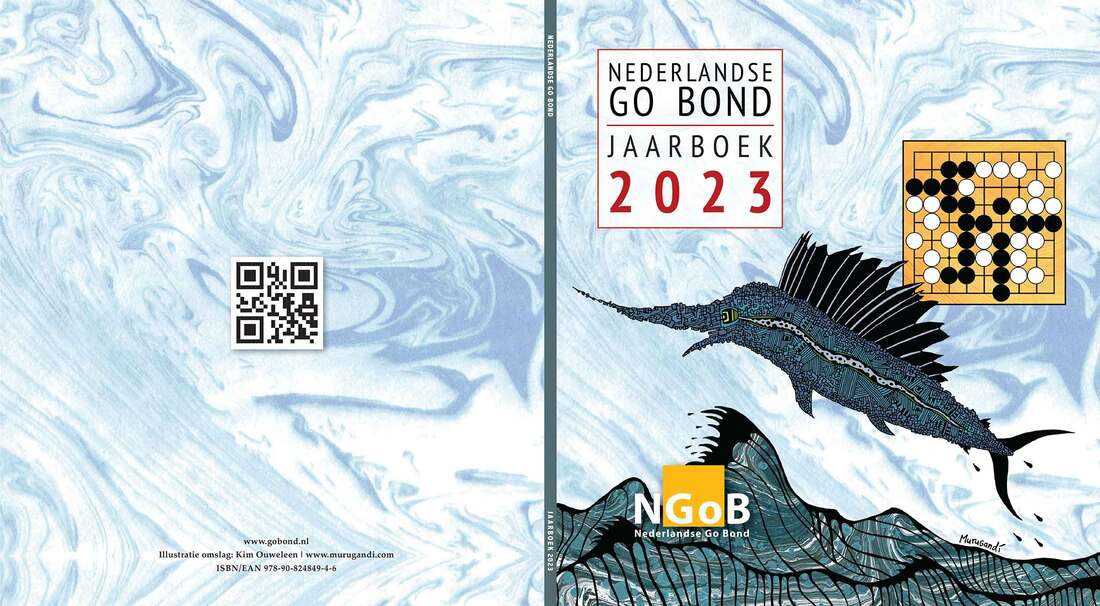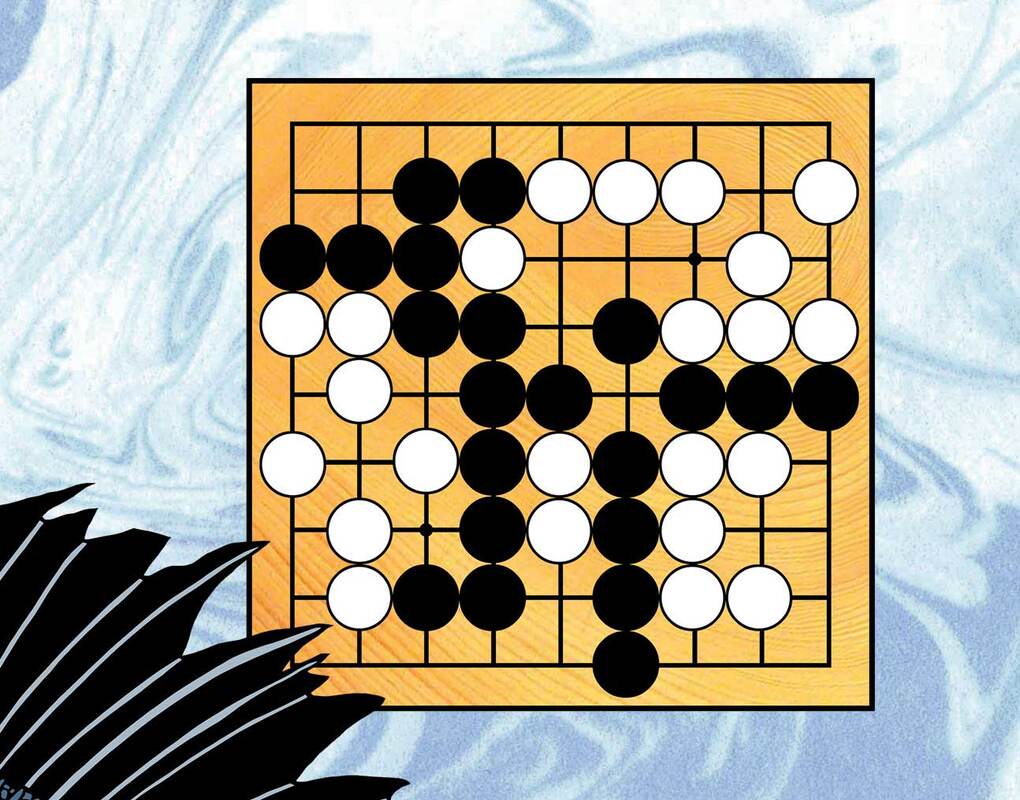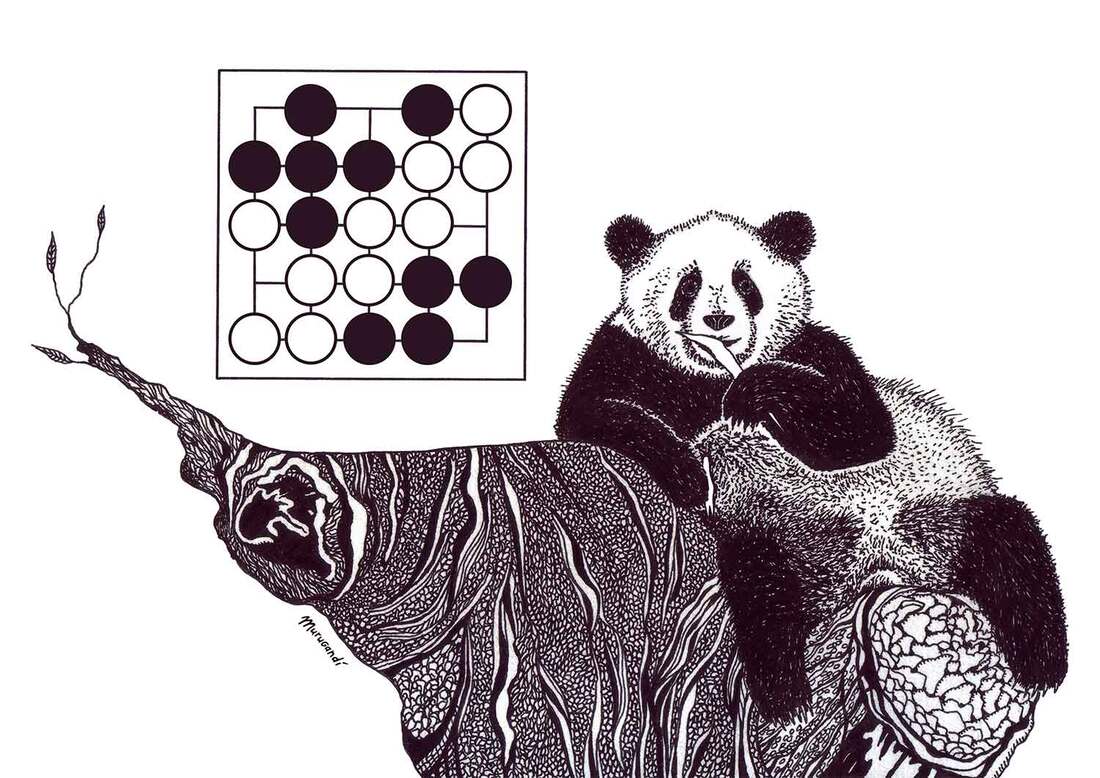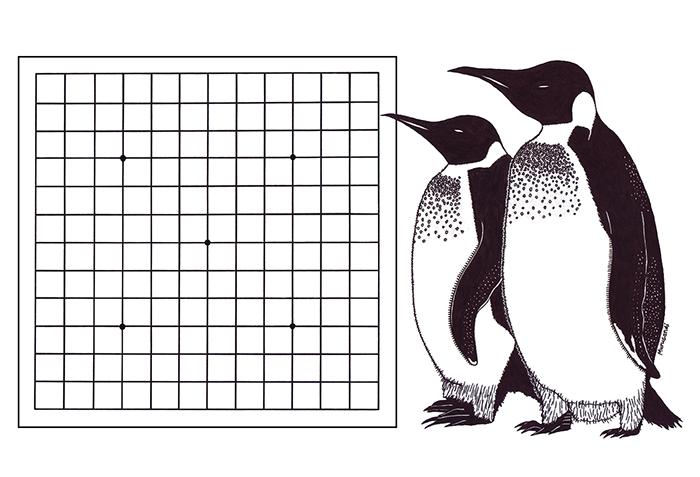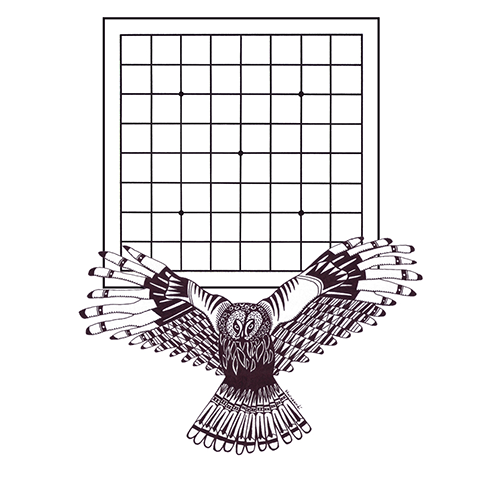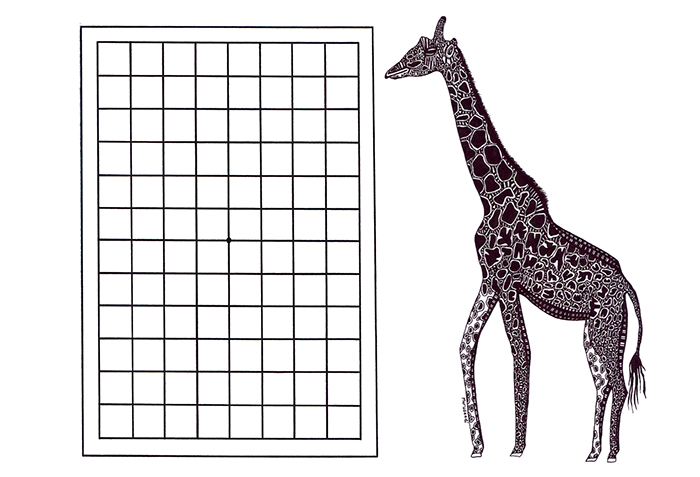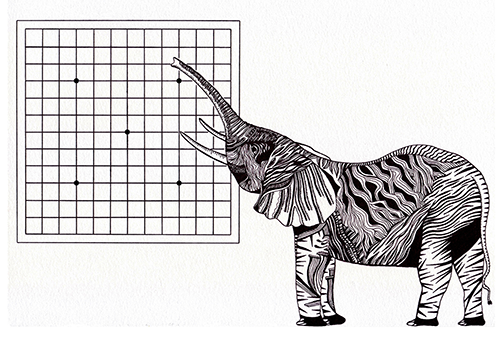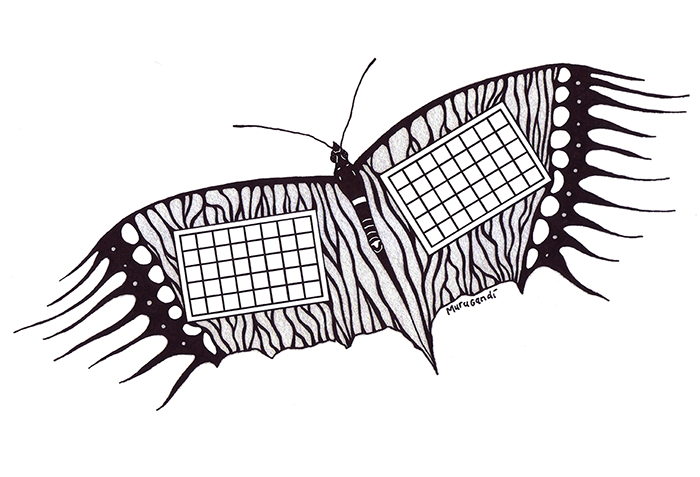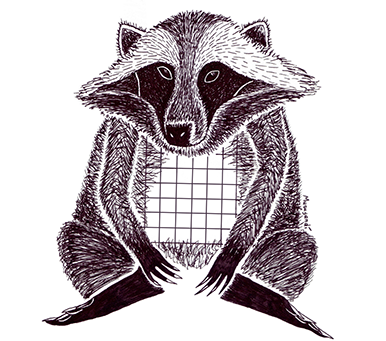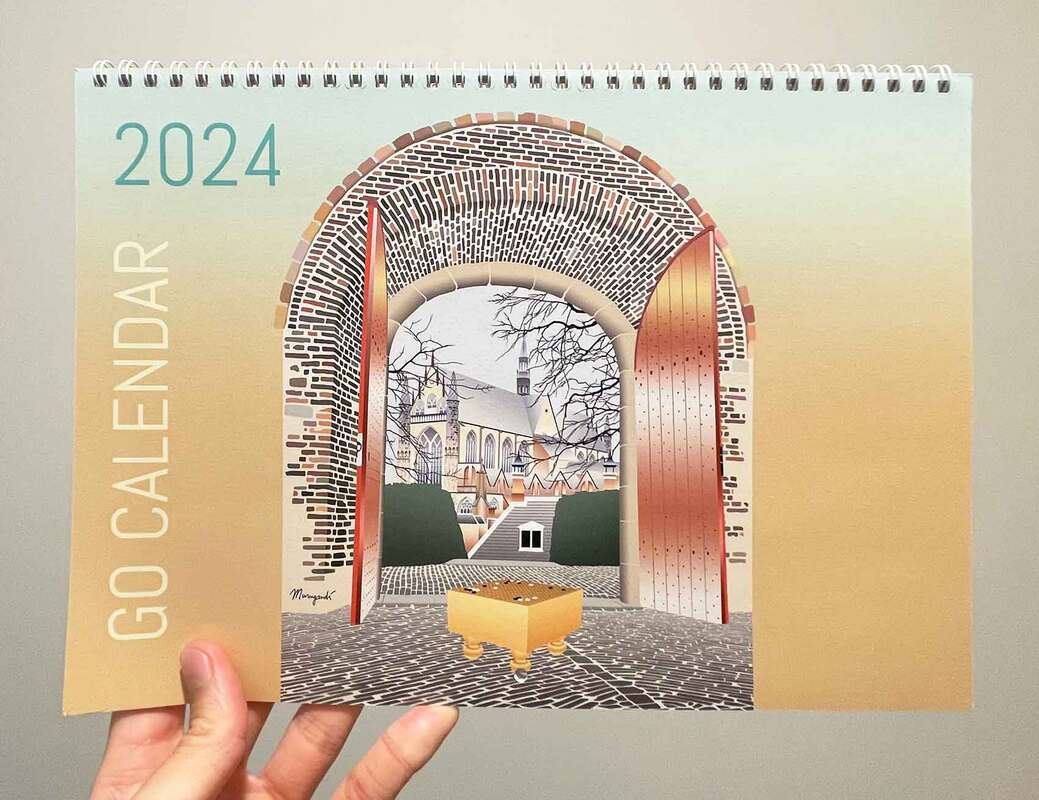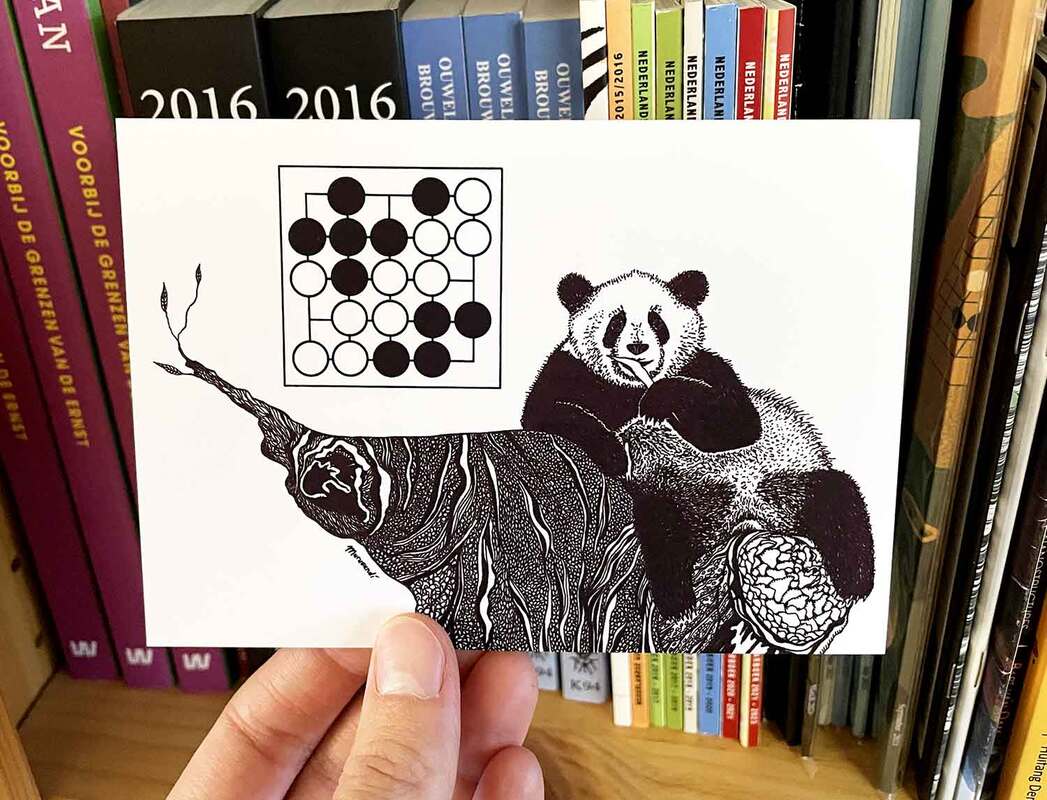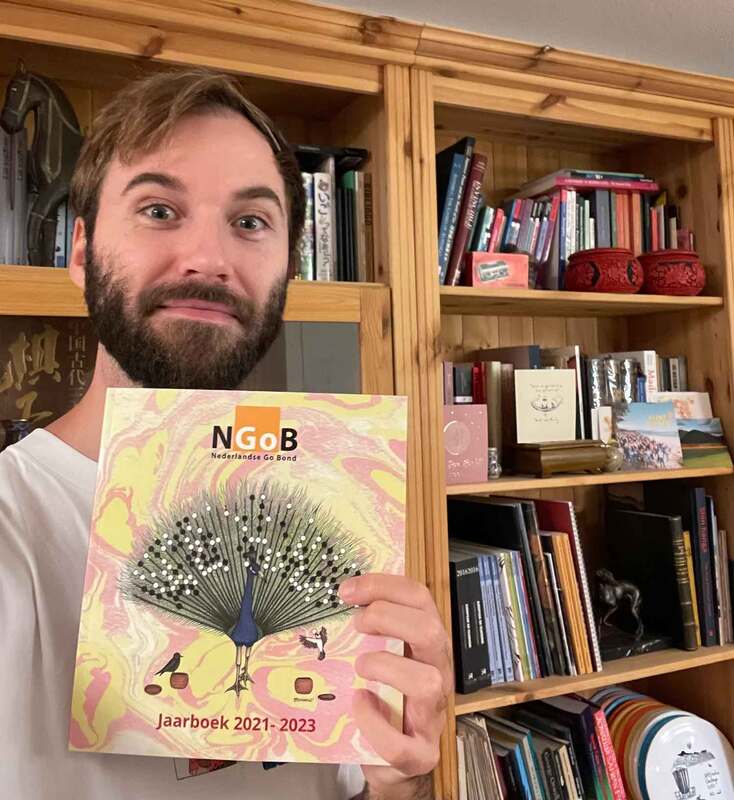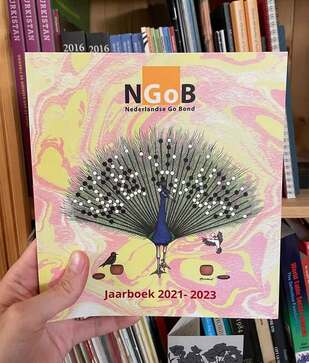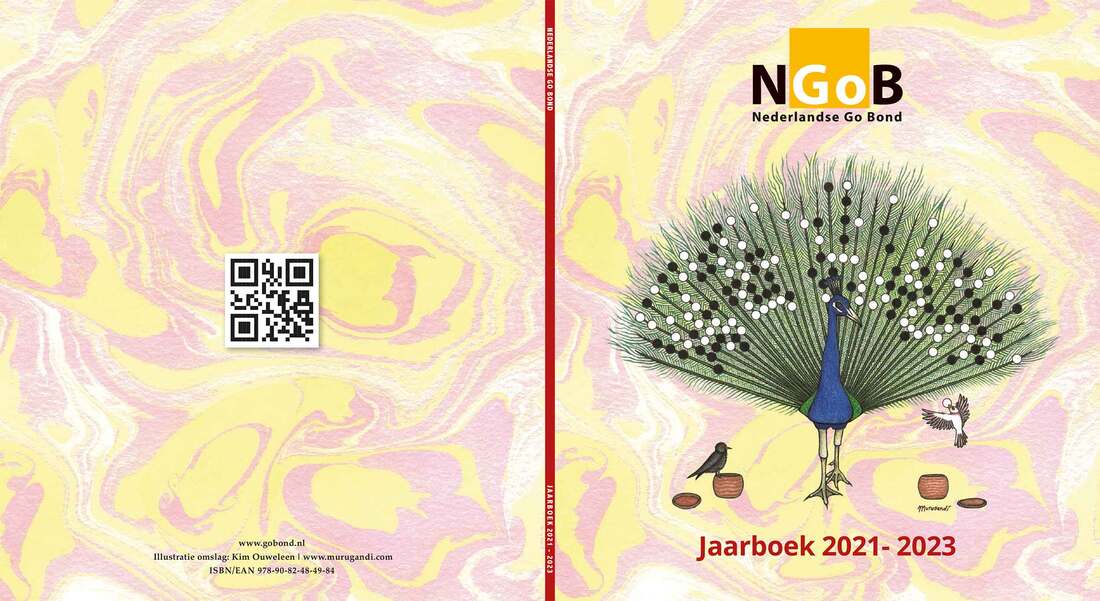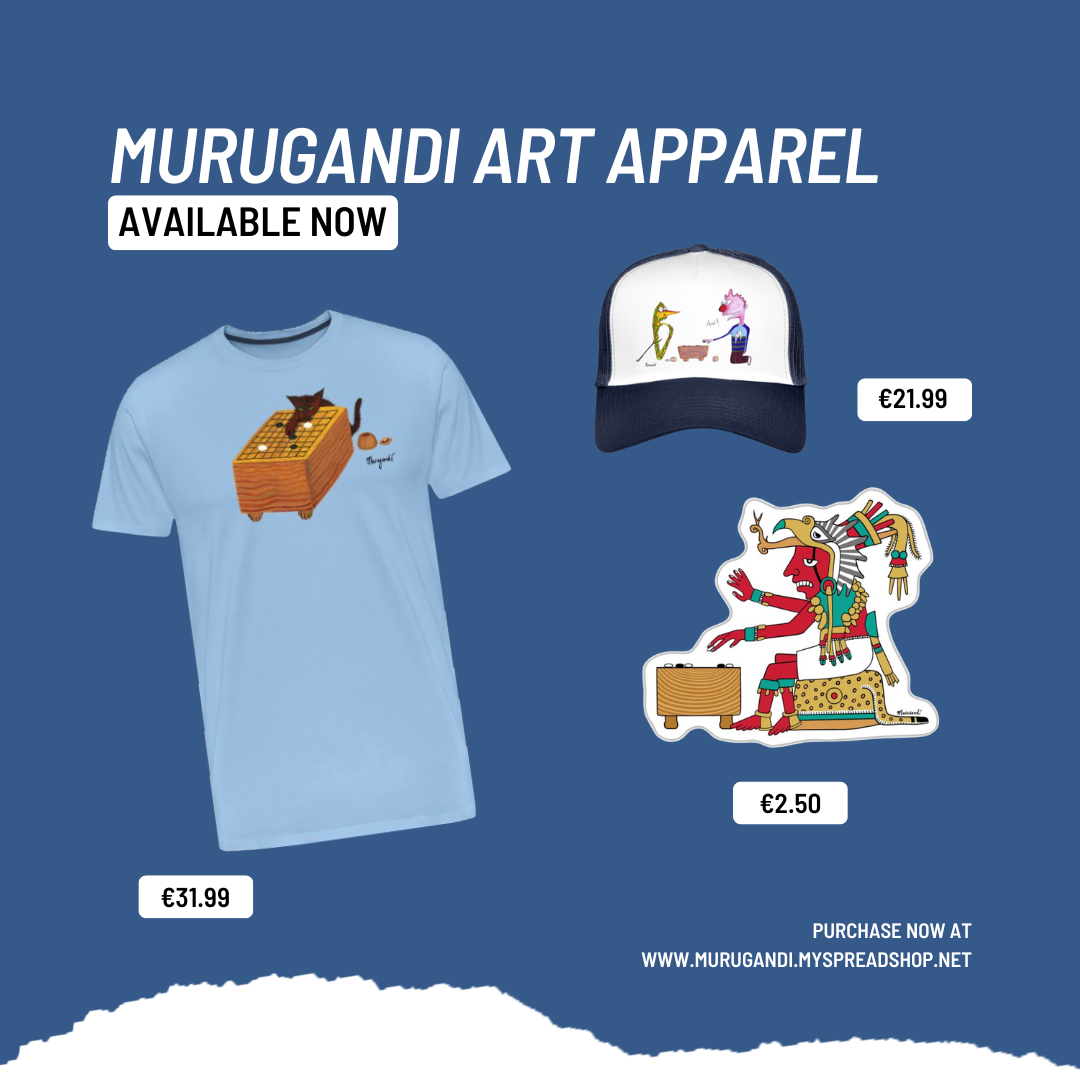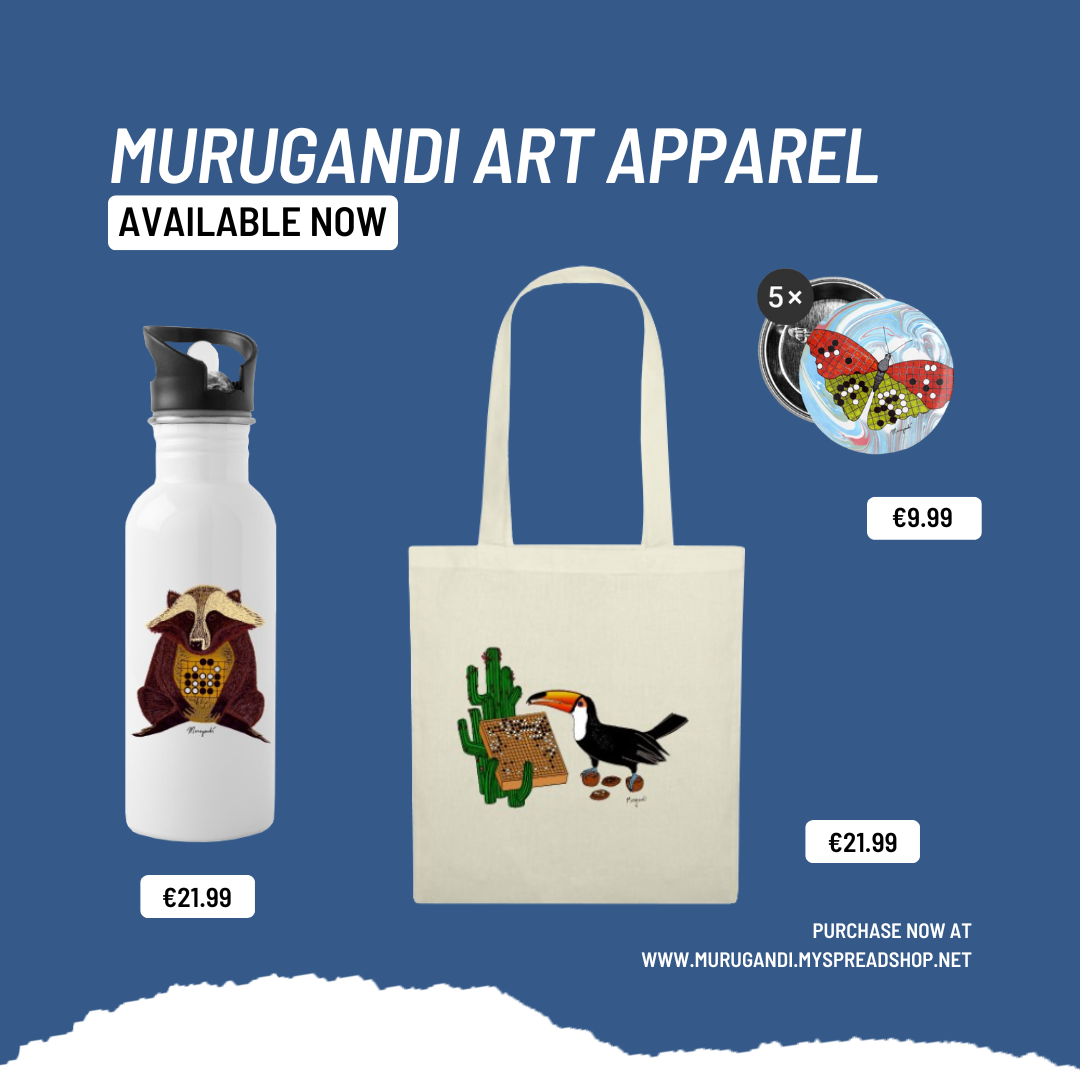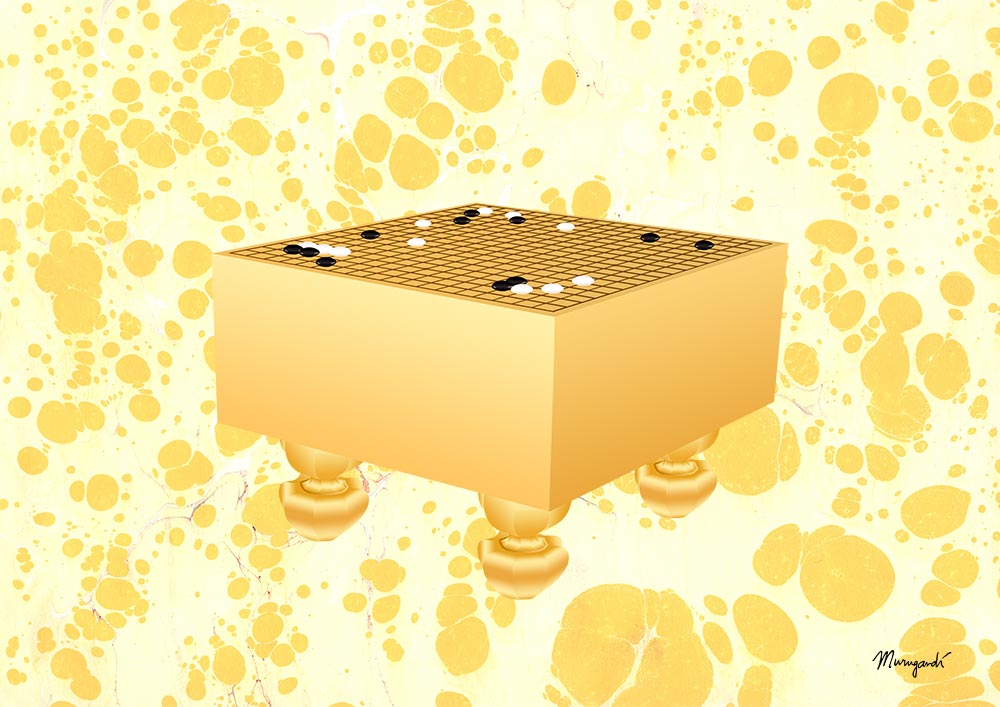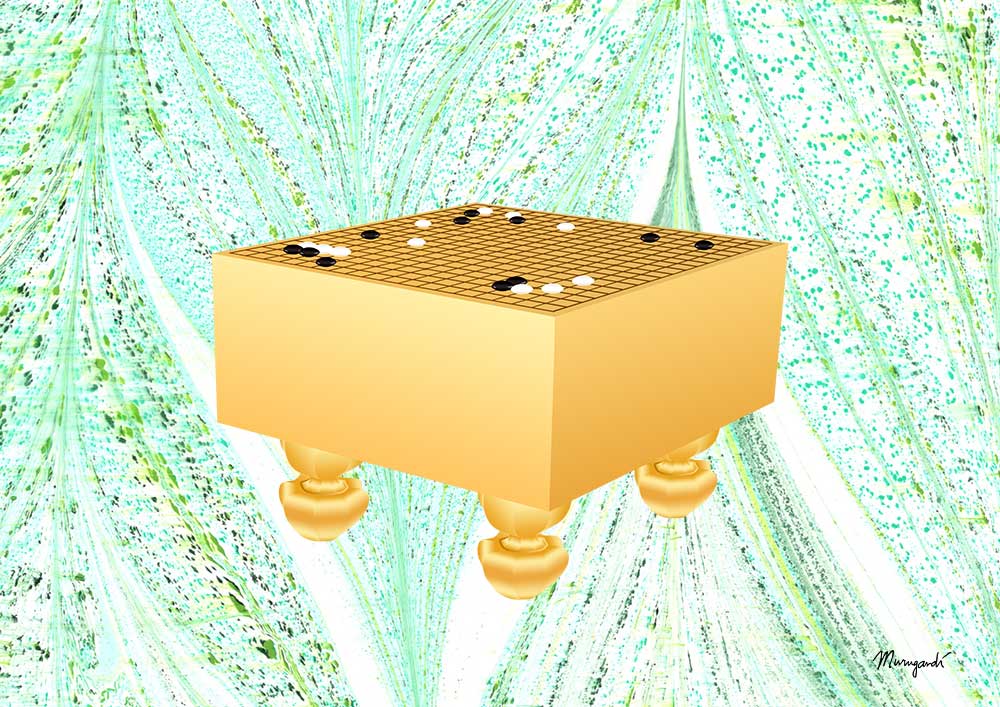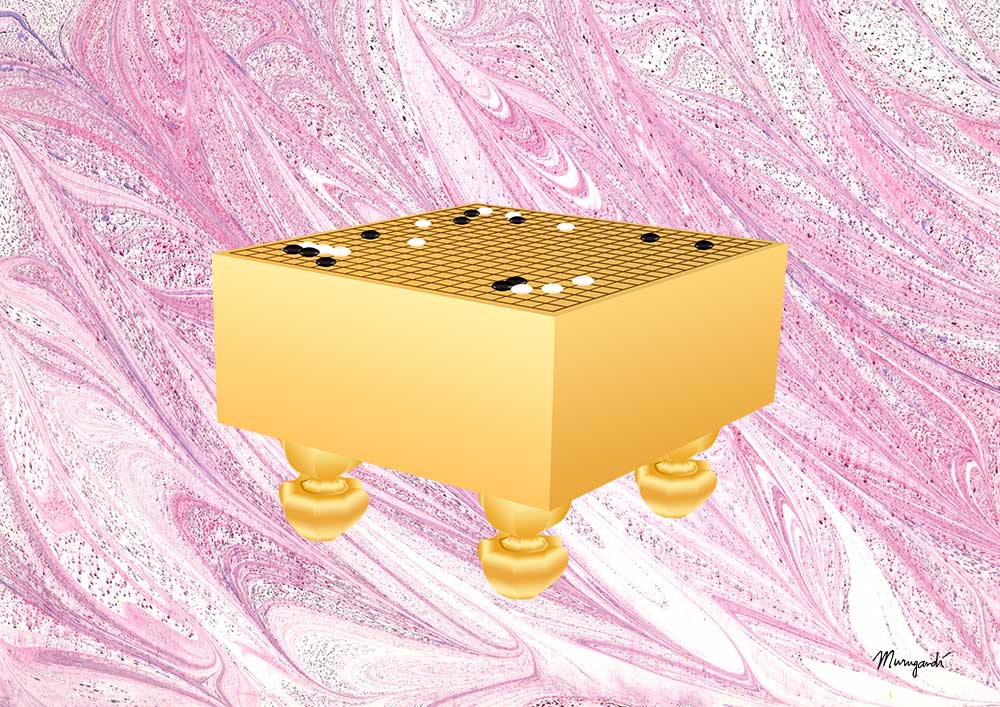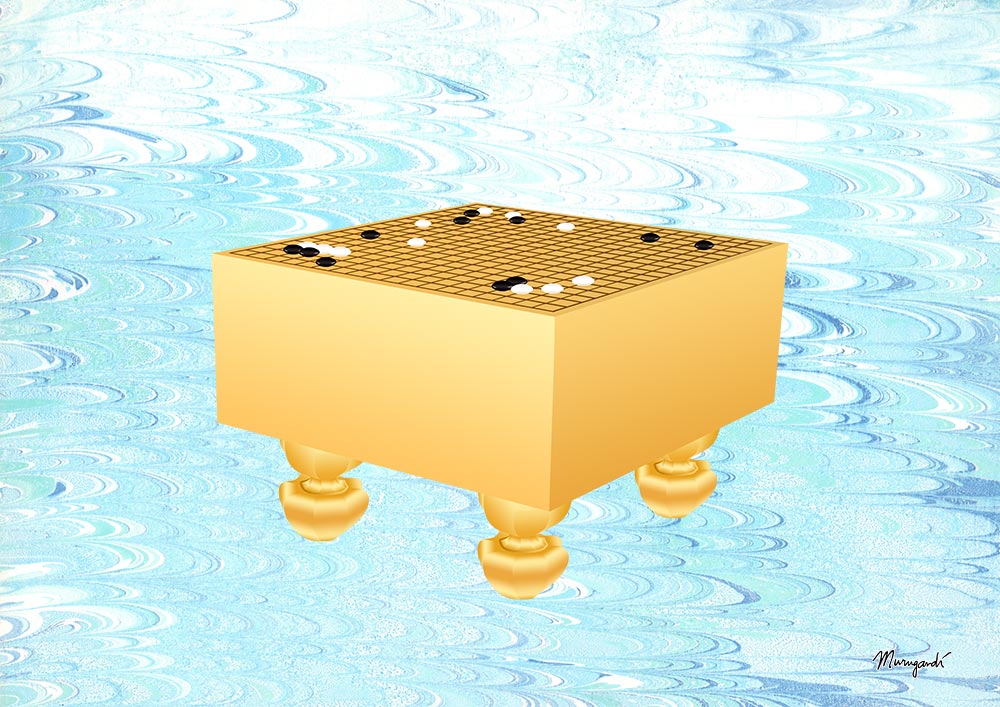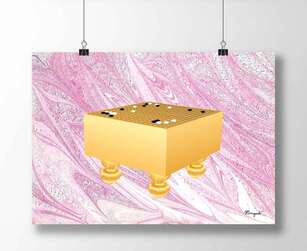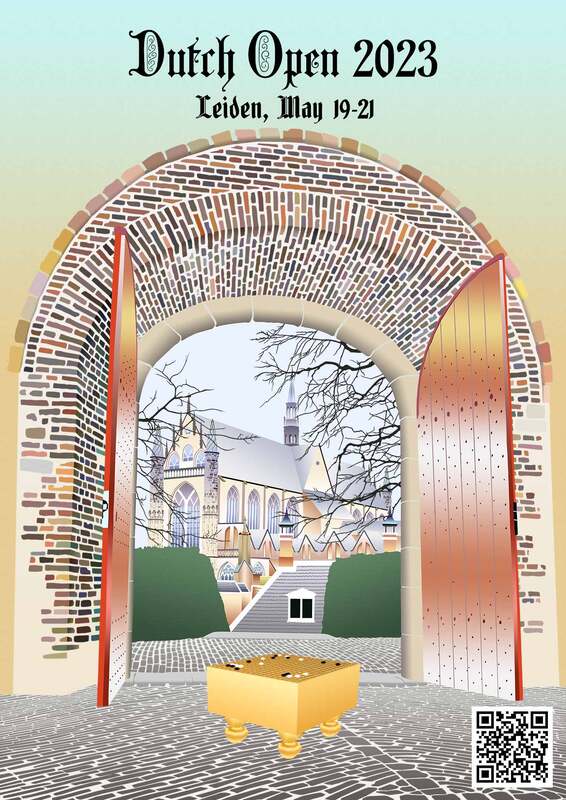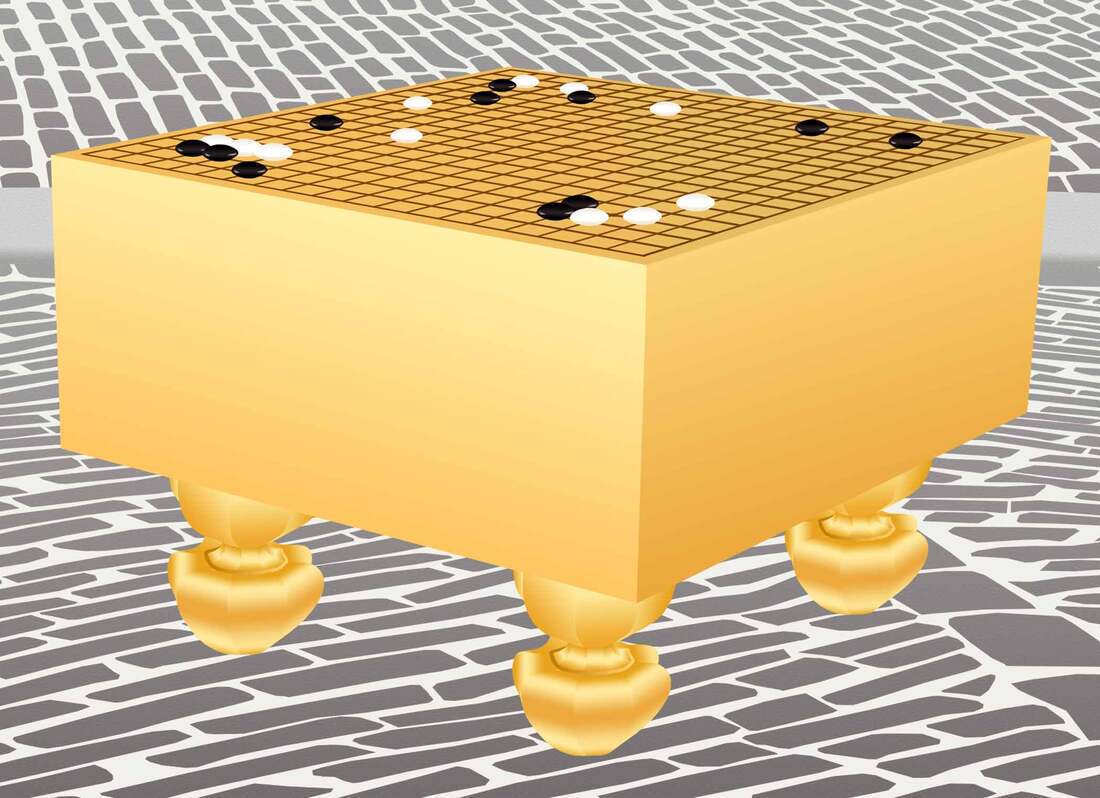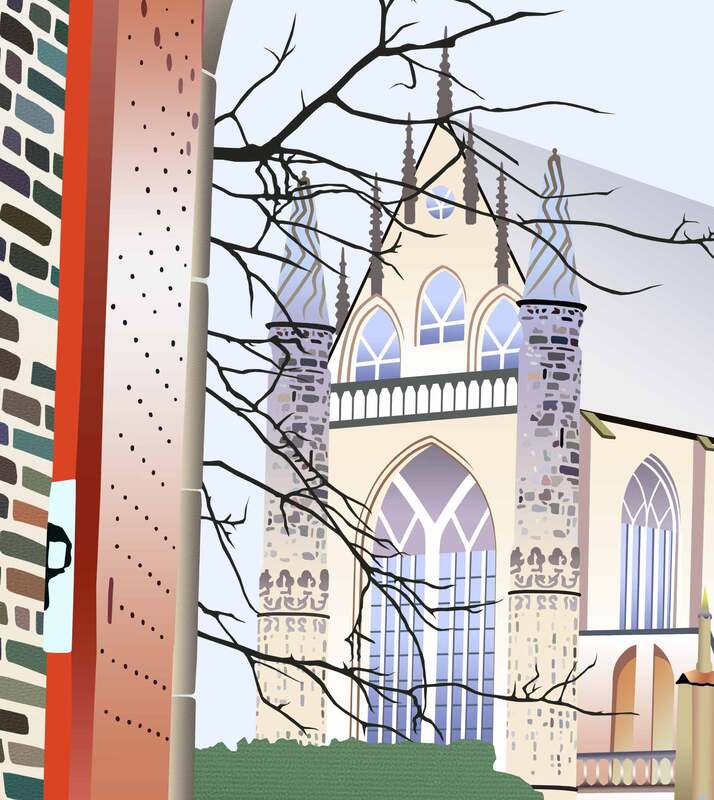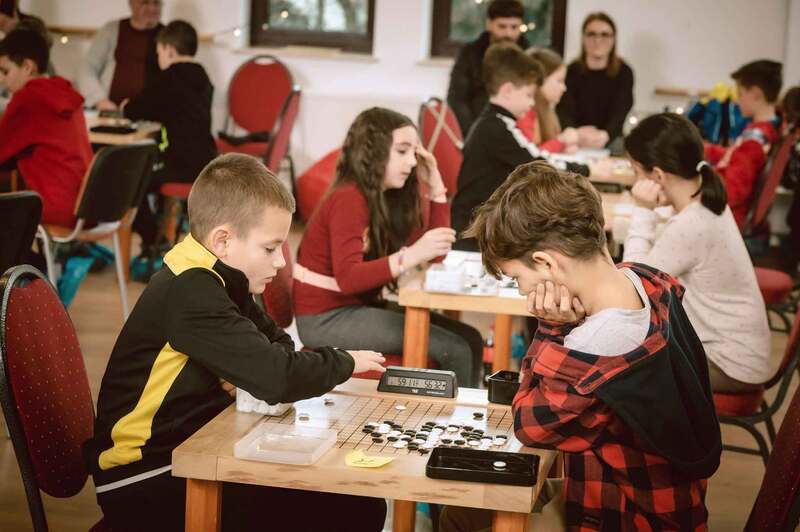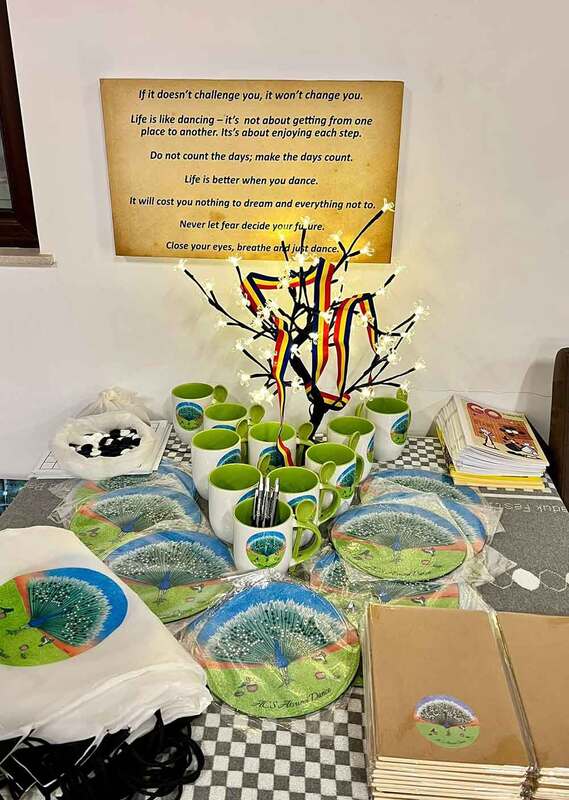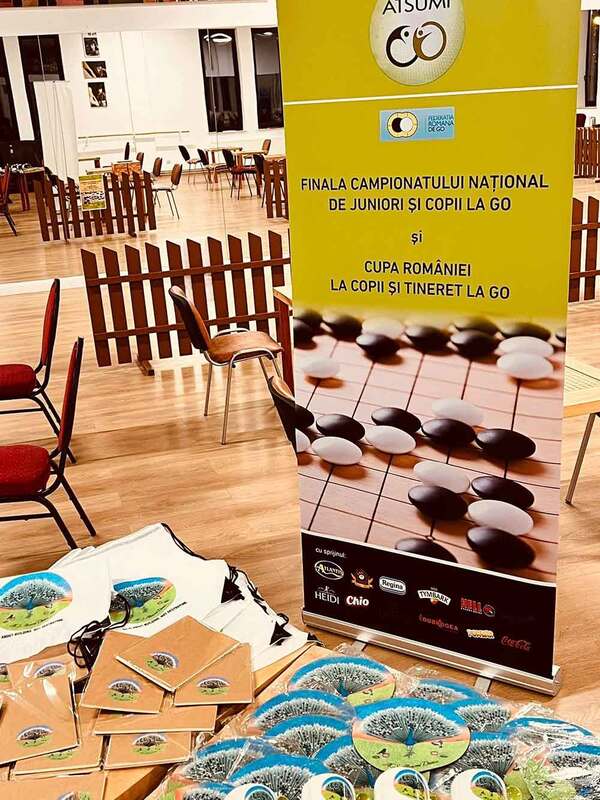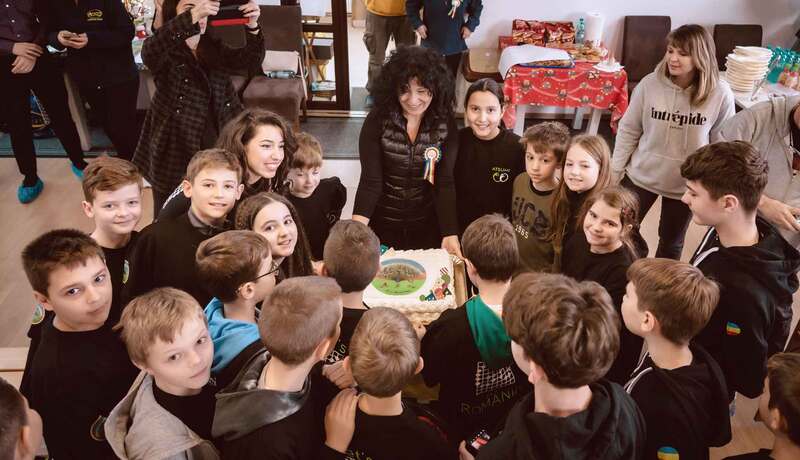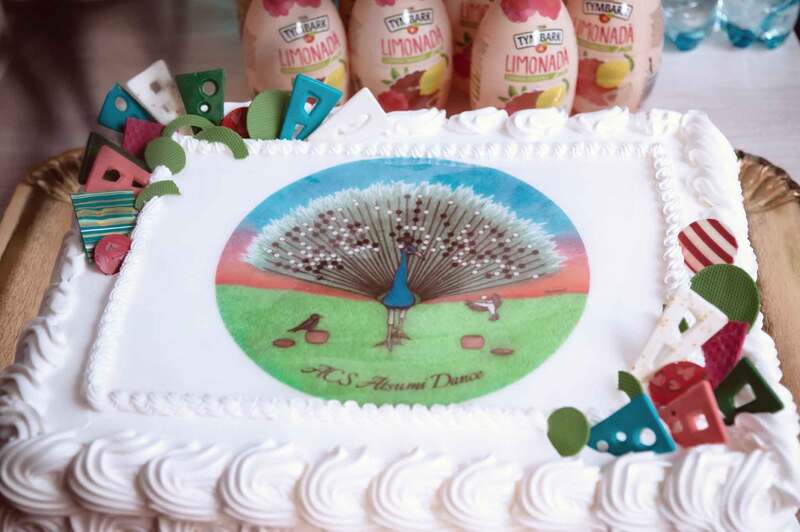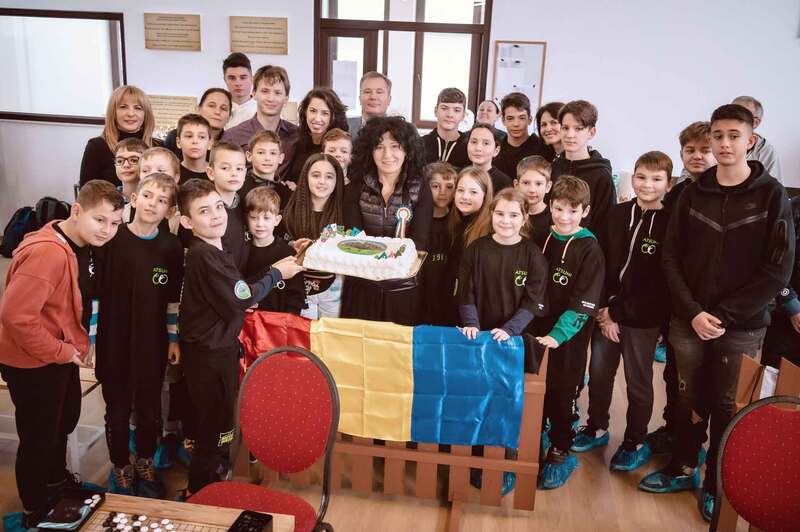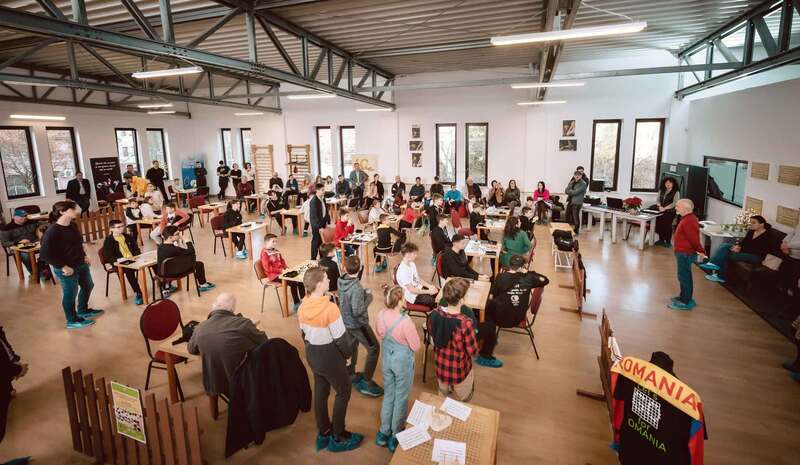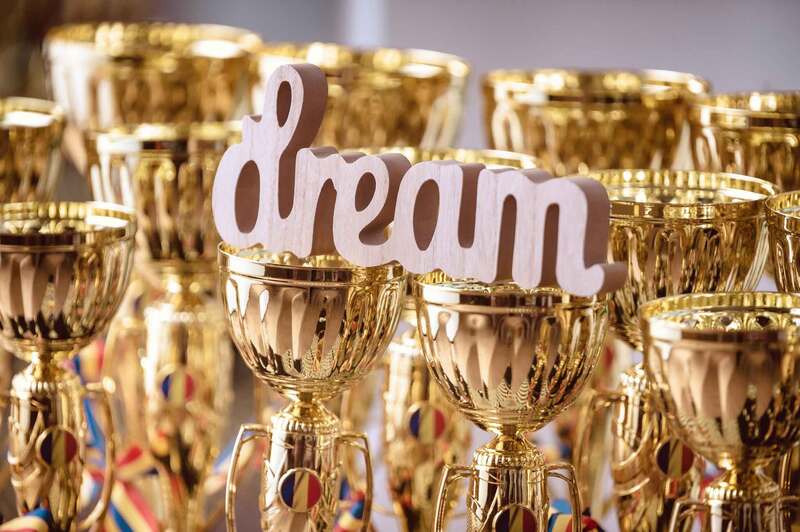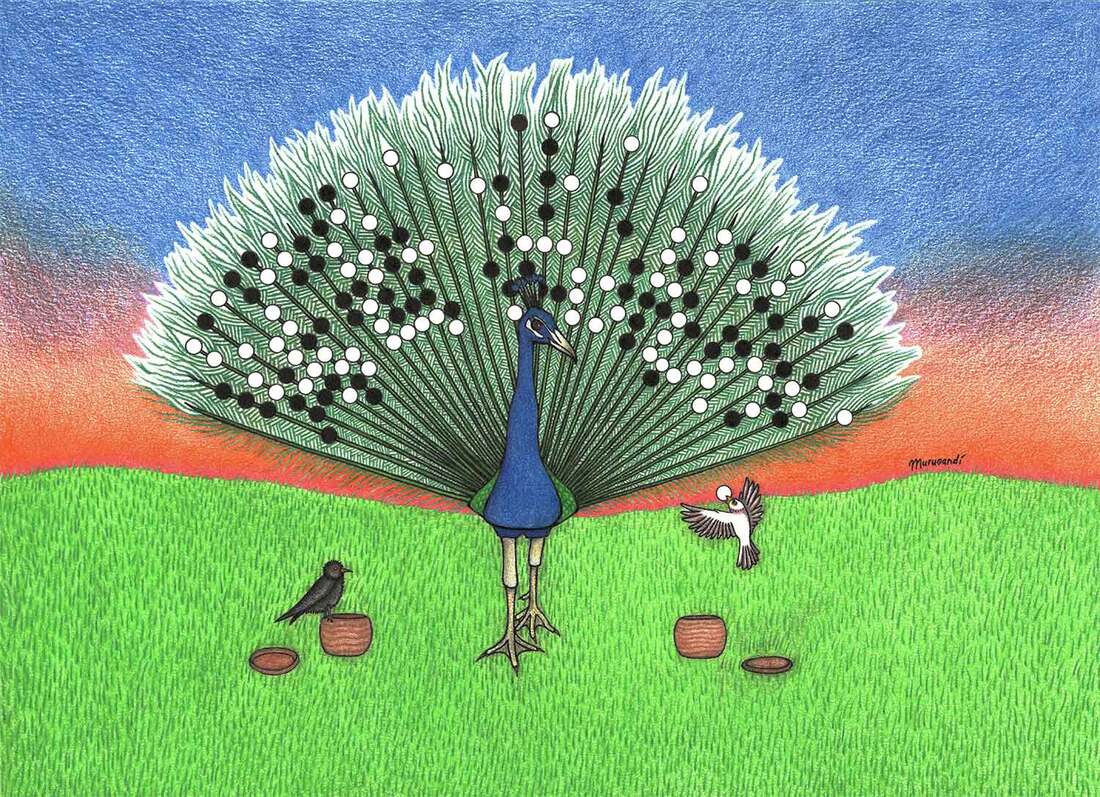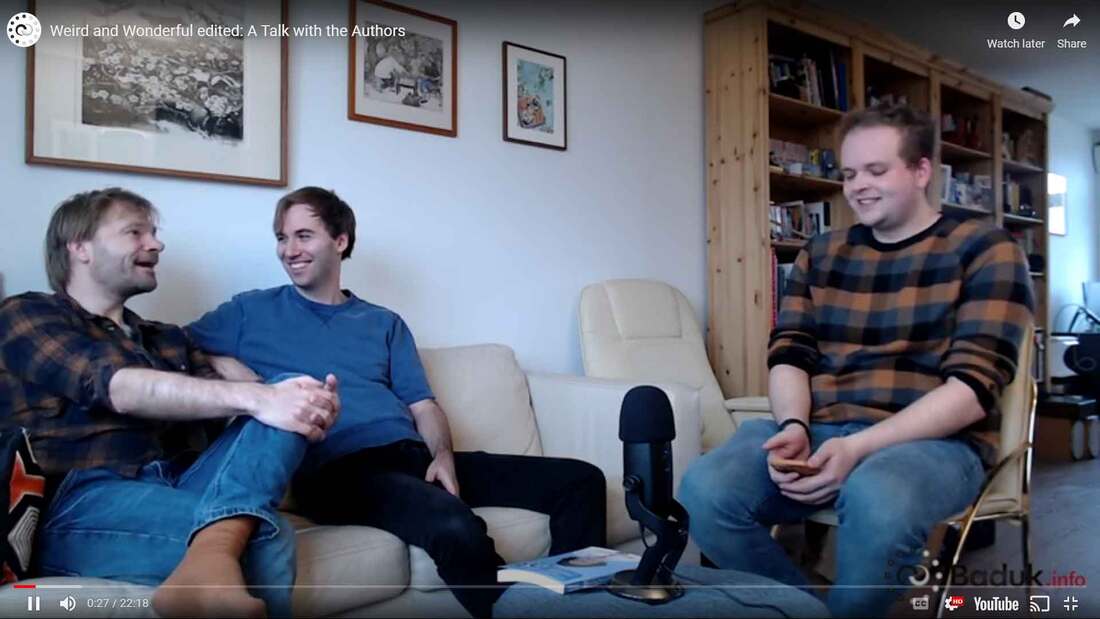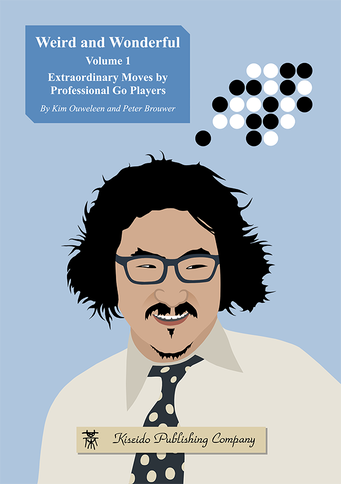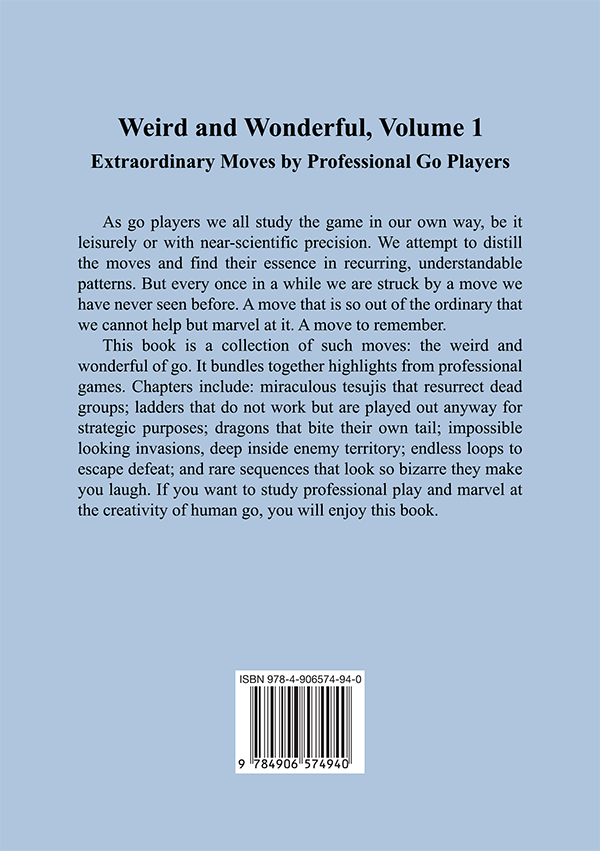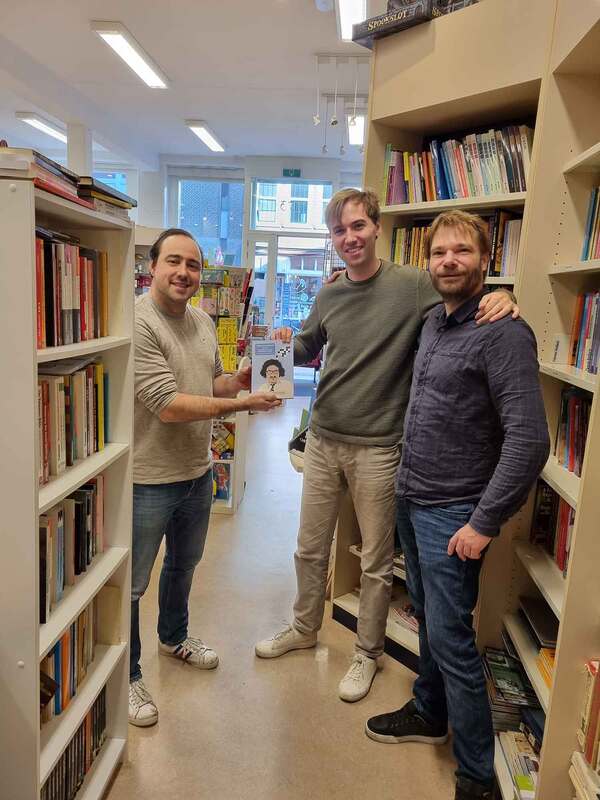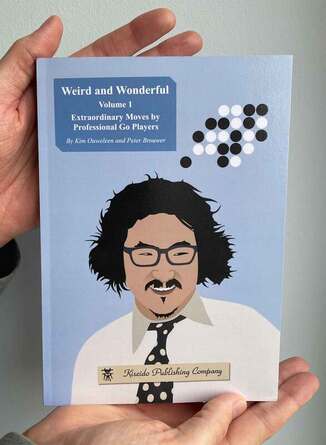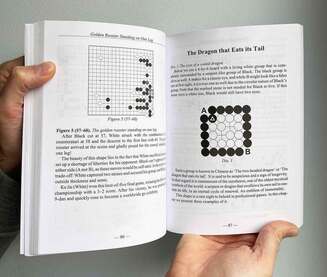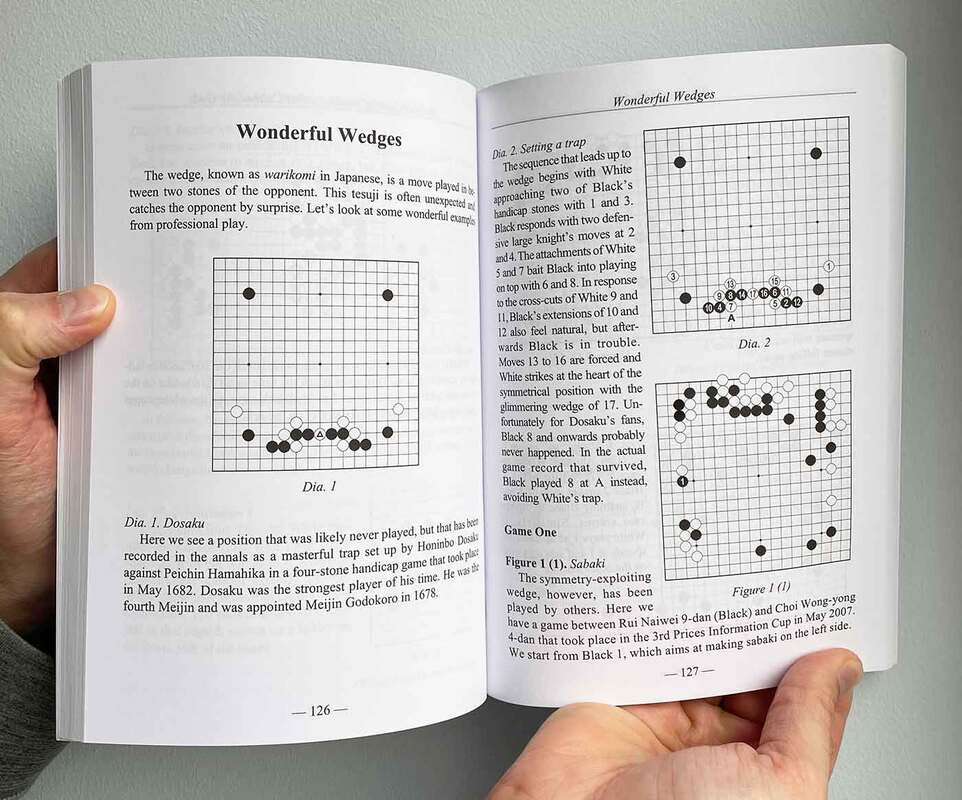|
My eighth consecutive cover design for the Nederlandse Go Bond (Dutch Go Association), featuring animals and paper marbling. The 2023 yearbook shows a swordfish jumping out of the sea and a 9x9 go board in the sky. The game of go that it depicts is nearing completion: we are looking at an endgame problem with a surprising twist. Komi is half a point; it is black to play and win by the smallest of margins. Can you find the tesuji?
0 Comments
In 2015 I created a series of 10 animal illustrations in black and white for BadukTV, a Korean television channel that broadcasts the game of go 24/7. The go boards depicted in the drawings were to have specific dimensions: 9x6, 13x13, 9x13, 9x9, 5x5, 13x13, 13x9 and 9x5. The plan for these drawings was to use them on promotional material for kids in Korea. BadukTV requested empty go boards, as they planned on adding go shapes themselves. I drew a turtle, a swordfish, a ring-tailed lemur, emperor penguins, a panda, an owl, a giraffe, an elephant, a butterfly and a raccoon-dog. Three of those were alterations of artworks I had already made in the past: the turtle, the swordfish and the raccoon-dog. The other seven drawings I made specifically for this project. See all 10 of them below. Sadly, for reasons still unclear to me, BadukTV shelved the project and my drawings were never used in Korea. The good thing about the situation was that the rights for the drawings came back to me and I was free to use them any way I wanted. In the years that followed, I created many colour versions of the artworks, incorporating puns for names of go shapes, historic go matches and swirly backgrounds made with marbled paper: click here to see the results. Some of these colour versions made it to the covers of the Dutch Go Yearbook (see here) and over the years I sold many of them in the form of art prints, postcards and mugs in my Etsy shop. A few of the black and white animals never made a reappearance: the owl, the giraffe and the panda were left and forgotten. Recently I rediscovered the panda and re-designed it (first picture of this post) when I was working on a 2024 go calendar (now 20 for sale: click here). The panda drawing incorporates a 5 by 5 go board that is filled with a go position I thought up: a double ko that can never be resolved by either player sets up a seki on the entire board. Seki (セキ) is the Japanese term for a local stalemate position of 'shared life': neither black nor white can take away liberties of the other's group(s), resulting in a truce.
The panda artwork is now for sale as cards and posters. Click here for the postcard. Click here for the poster. The cover of the 2021-2023 Dutch Go Yearbook is the seventh consecutive one in a series I have made for the Nederlandse Go Bond (the Dutch Association for the game of Go, also known as baduk (바둑) in Korea, weiqi (围棋) in China and igo (囲碁) in Japan). It features my artwork "Two Little Birds Play Go on the Feathers of a Peacock", which was originally made as a private commission between 2020 and 2022, You can read more background information and view some detailed pictures of the peacock artwork by clicking here.
Dear go players,
I have heard your cries and I have listened! A while ago I did an online poll to ask what kind of products you would like to see for my go-related designs, and the majority of you mentioned clothing and stickers. I've had a shop on Spreadshirt for a while, but throughout the years it turned into a bit of a mess due to all the changes in Spreadshirt's user interface and policies. I recently decided that I would clean it up and update the shop, so I've been working on it religiously. Now all my go-related art is purchasable in the form of apparel and other merchandise! It is accessible by clicking here. The shop features worldwide shipping and a wide variety of products, from T-shirts, hoodies, jackets, caps and all sorts of other clothes for both men and women (adults & children!), to stickers, fridge magnets, mousepads, buttons, bags, pillow cases, phone cases and much more. By clicking on one of the products in the shop, you are able to access all products available in that specific design. You are also able to search by category/type of product by using the drop-down menu at the top of the screen. If you like any of the products in the shop, but would like the design to your own taste - bigger, smaller, in a different spot on the product, combined with others designs: anything is possible. Send me a message, and I'm sure I can arrange it for you. Spread the word and happy shopping! I used my latest marbled papers to create a new go-related artwork. It features the go board from my poster design for the Dutch Open: depicting a match that was played between top Chinese professionals Mi Yuting 9-dan (芈昱廷) and Ke Jie 9-dan (柯洁) on the 15th of February 2023.
This artwork comes in a variety of four different background colors of yellow, green, purple and blue. All versions are available as posters and as postcards in my Etsy shop. You can reach the products by clicking the images below. This design is also available on T-shirts and other clothing and household items in my Spreadshirt shop: click here. The organizers of the Dutch Open 2023 commissioned me to make a poster design. The Dutch Open is the largest go tournament of the Netherlands, the replacement of what used to be the Amsterdam International Go Tournament. It attracts go players from all over Europe. This year the tournament will be held in the city of Leiden, from May 19-21 in the Denksportcentrum (mind sport center) at Robijnstraat 4.
My design features a view from the Burcht van Leiden to the Hooglandse kerk, two iconic buildings of the city. We see a traditional go board with 22 moves played out on it. This modern opening pattern is taken from a professional game between Mi Yuting and Ke Jie that was played on February 15th of this year (click here to view the game). The open doors invite us in. I largely based my artwork on a photograph by Harry van der Krogt, who is an active organizer in the Dutch go community, the former manager of the European Go Cultural Center and a board member of the European Go Federation. This design took me several weeks to make, and it probably topped my Go Peacock drawing in terms of hours spent on it. It most certainly is the design with the most layers in Photoshop I have ever created. The poster will be used to promote the tournament online and will be physically hung at the location of the tournament. More details about the tournament can be accessed by scanning the QR code or by clicking here. I plan to make a version without text for my Etsy shop, purchasable as posters and postcards. Below some zoomed-in details of the artwork. In the weekend of 3-4 December the Romanian Junior National Go Championship (Finala Campionatului Național De Juniori Şi Copii La Go) was held in Bistrița, Romania. Rodica Dobranis, one of the main organizers of the championship, had seen my artwork "Two Little Birds Play Go on the Feathers of a Peacock" on social media. Since the city of Bistrița is, among other things, known for its traditional peacock plume headdress, Rodica asked me if I could make my artwork into a logo for go club ACS Atsumi Dance, the host of the tournament. I was glad to do so. The go peacock was used on t-shirts, diplomas, mugs and other prizes for the children. How cool is that? Even a cake with my artwork was made! I am really grateful to have been a smart part of this amazing go event for kids. Thank you, Rodica, this is why I make go art.
Today I finished a drawing that had been lying on the shelf for some time. Before covid, so more than two years ago, I received a private commission from John, who'd commissioned me to make art for him twice before ("Salsa Dancing Tigers" and "Ski Jumping Penguin"). John always comes up with fun and challenging ideas to draw. This time was no different. The task at hand was to draw a peacock with go stone feathers. Later an extra criterion was added: two little birds, black and white as metaphors for the colors of the stones, would have to place the stones on the peacock's plumage, effectively playing a game of go against each other. I'm a fan of Peng Liyao's complicated and tesuji-packed playing style (彭立尧, Chinese 8-dan professional go player) and so I decided to use his games for the go motif. I picked two of his game records and merged parts of their go positions, adding or omitting stones here and there. A black and white version of the drawing was created, and I placed it aside to think about the next stage: color. Putting a drawing aside is a dangerous thing for me. I tend to work on an artwork continuously until it's finished, making optimal use of the flowing creative juices, because I know I need to. If I stop, life takes over. That's what happened in this case, too: other things took priority and the drawing ended in one of my many art folders. Luckily, John was in no hurry, and covid took away any urgency that was left. I'm the kind of person that doesn't like to leave things unfinished, and the drawing was gnawing at my thoughts for months on end. It was one of those things you know you still have to do, but somehow cannot muster the willpower for. The longer you wait, the harder it becomes to commit to. One day in July I decided to finally get back to the drawing and ignore my fear of ruining it. After all that postponement, once you get going it's surprising how "easy" and pleasant the task often turns out to be. Not that I finished the drawing quickly though: I probably spent more hours on it than I did on any drawing, ever. Here is a little glimpse into the coloring process: For me drawing is an experience of ups and downs. There are those rare drawings where everything magically seems to go the way you want it to, but more often than not I ponder, fret and experience mood swings galore. Justyna has to live through my cries of desperation: "Arrghh! The drawing is ruined!". "It's fine, I can't even see it." "Are you sure? It's right there. It's a huge mistake!". "Nah, come on, it's barely visible." I'm lucky that she is as understanding as she is and genuinely likes my art. She always reassures me and puts me back on track. The key is to find peace in "mistakes" and learn to go with the flow. If I do that, the mistake often evolves into something else that becomes a part of the whole. During this particular drawing, the coloring process of the background was particularly stressful. I put so much time into the feathers and go stones of the peacock, and I was so content with the result, that the background had to be perfect. Because my expectations were high, anything I would have done would have probably disappointed me. I wasn't happy with the grass at first, and then the sunset seemed to make it better, but halfway through it felt like it was only making it worse. Sometimes you need some distance, and after it was finished I gained a different perspective. It also helped that everybody else seemed to love the drawing, so now I'm loving it too! Bart Slijkhuis from go news website www.baduk.info recently interviewed Peter Brouwer and myself about our new go book Weird and Wonderful, Volume 1: Extraordinary Moves by Professional Go Players. Bart asks us about our discovery of the game of go, our videos for BadukMovies, the writing process of the book and our favorite chapters of this first volume in a series of three.
You can watch the interview by clicking here (redirects you to YouTube). After more than a year of working on it, I am proud to announce the release of my newest book: Weird and Wonderful - Volume 1: Extraordinary Moves by Professional Go Players. I co-wrote it with Peter Brouwer and it was published in December 2021 by the Kiseido Publishing Company. It is available as a hard copy on the website of Kiseido (click here), on the website of European distributor Schaak & Go winkel Het Paard (click here) and as an e-book in the SmartGo web store (click here). Soon it will also be available in other go shops worldwide. This is the first volume of what will be a series of three books:
Volume 1 is a collection of creative, bizarre, exquisite, rare and funny moves from professional play. Suitable for players of about 10-kyu to 6-dan level. The book counts 246 pages and contains the following 18 chapters:
If you've read it, I'd love to hear your thoughts in the comment section! |
AuthorWelcome to my website! My name is Kim Ouweleen, my artist pseudonym is Murugandi. I am an illustrator, author, proofreader and go teacher from Amsterdam. Do you want to support my art? I take on private commissions.
On Etsy I sell prints, postcards and mugs.
On Spreadshirt I sell clothing, mouse pads, stickers & more.
Want to stay updated on my latest art? Click below to subscribe to my newsletter.
You can view my previous newsletters here.
Archives
December 2023
Categories
All
|
